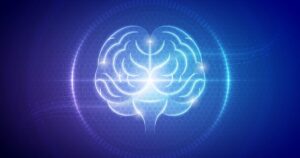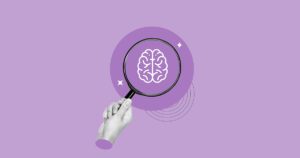Melodies can cheer us up, and that’s just the beginning
Some believe that the birth of the universe was accompanied by sound—the primordial om. Perhaps, that’s why human are naturally drawn to music, seeking out vibrations as a way to anchor an experiences. The notion that the melodies of Claude Debussy and Coldplay conjure certain calm is not just in your head. A 2017 study of almost 2,000 participants showed that those who had music intervention—listening or participating in music therapy projects—showed statistically significant reduction in depression levels.
Music is often used as treatment, especially in psychedelic therapy, including ketamine, to help manage mood disorders and addiction. In fact, a study in Psychopharmacology showed that music is a vessel for interpreting emotions (both positive and negative) and plays a role in “insightfulness”, creating openness and influencing one’s sense of safety. The “mystical experiences” that can come with psychedelic therapy, like IV ketamine, tied to music have also been linked to reducing depression, researchers found. Perhaps that’s why combining ketamine with vibroacoustic healing, such as the inHarmony Sound Lounge Experience at Soft Reboot Wellness, amplifies how music helps the mind relax and synchronize into a meditative state.
Here is what you need to know to curate an immersive deep listening experience in order to connect your mental and physical states.
What is Sound Healing?
You may have experienced sound healing in a yoga class, as your teachers took out a brass Tibetian singing bowl to guide meditation. Listening, and literally tuning into sound, is what helps the mind focus without completely zoning out. Perhaps that’s why sound healing can be traced back to the Aboriginal tribes playing the didgeridoo (an Australian wind instrument) and the Himalayan “sound baths.” By allowing sound, and vibrations, to wash over you, listening becomes an immersive experience. A 2019 Global Advances In Health and Medicine study showed that a 30 minute didgeridoo meditation was more effective than silent meditation for relaxation and sever stress. The sonic and wave properties of the Tibetan and quartz crystal singing bowls have also been linked to boost emotional healing in psychotherapy and counseling sessions, especially when paired with deep breathing, visualization and a nurturing environment.
What are binaural beats?
There is a reason spas play New Age music—those calming, lingering sounds that evoke images of streams and leaves waltzing with the wind—the hokey soundtrack can actually manipulate your mood. What you’re hearing are binaural beats. The reason spa music sounds so mystical is because each ear is presented with a different tone. As one study puts it: “When the 400 Hz tone is presented to the left ear and the 440 Hz tone to the right, a beat of 40 Hz is perceived, which appears subjectively to be located “inside” the head.” Meaning: music can actually change how you think. This auditory beat stimulation plays a role in how you think and process memories. What’s more, researchers found that those who listened to recordings with binaural beats reported a 26% decline in anxiety scores, compared to 11% decline in a placebo audio group.
How To Make a Mindful Playlist
Whether you’re coping with burnout, addiction, anxiety or depression, choosing music as an intervention can significantly help your psychological state. Listening to music also lowers blood pressure and cortisol levels as well as decreases your heart rate. When you feel overwhelmed refer to a curated playlist to feel better. Stress, in particular, activates the sympathetic nervous system—that’s why your heart feels like it jumped on a fast-paced treadmill. Pausing to listen to music can quell this feeling of “too much.”
To create a mindful playlist consider different categories of music. You can stick to one genre, or create your own eclectic soundtrack. Classical music, for instance, is said to ease tension, reduce fatigue and sadness. You can practically sense how the simple chords of Erik Satie’s Gymnopédie No. 1 slow your breathing as they echo each other. On the other hand, Deuter, the German New Age music guru composes calming tunes using a medley of flutes, sitar, Tibetan bells and keyboard to fuse both acoustic and electronic instruments into binaural beats. Tom Middleton’s hypnotic chimes-meet-computer melodies sound other worldly, allowing your mind to shift gears from worries to looking at a moment with a new perspective. Spotify lets you create playlists, such as this Desktop Isolation compilation that assembles space-age music, with contemporary iterations of New Age-like tunes that embrace modern beats. Playlists like “Songs for Ketamine” and “Ketamine 2” are already curated to enhance the IV ketamine therapy experience—though of course can help you find calm at home sans ketamine. Adding songs with poetic lyrics, like those from Tori Amos, can stir emotions as you get lost in her piano notes.
The mindful playlist you create should be distinct to you and your needs. You may even want to create more than one to suite various circumstances—perhaps something melodic, like a classical compilation to start your day, and a nature-based playlist to wind down. Like a tasting menu, the flavors of music should complement your emotional Rolodex.




